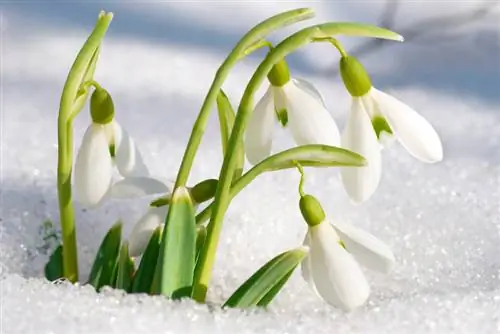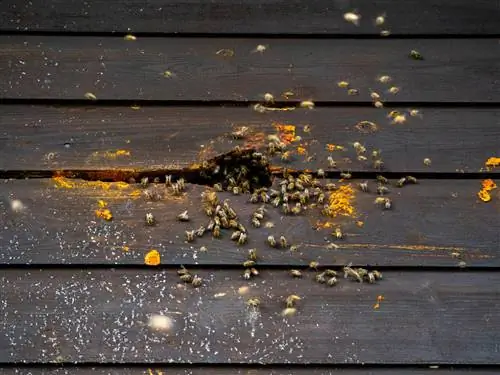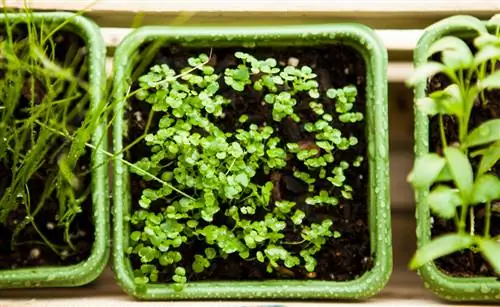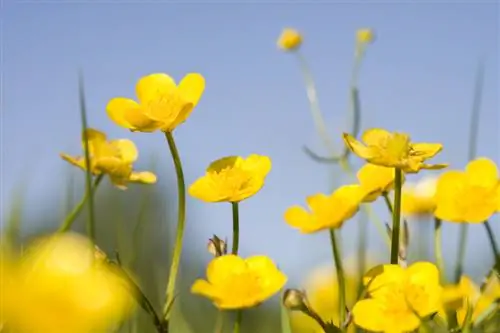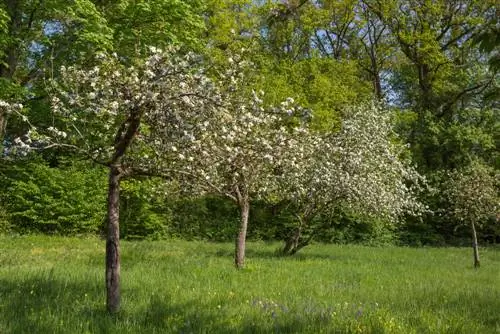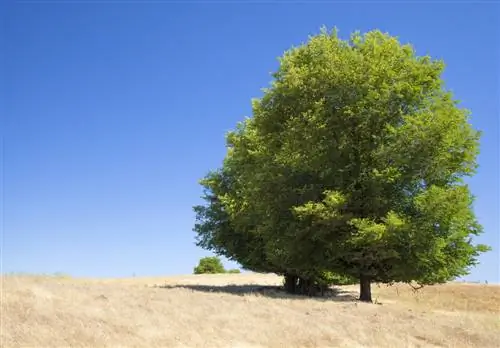- Author admin [email protected].
- Public 2023-12-16 16:46.
- Last modified 2025-06-01 06:02.
Who doesn't know the snowdrop? It delights the eye with its delicate flowers in the bleak winter time. Many gardeners plant it in the garden as an early bloomer. But what information is worth considering before planting?

What are the most important characteristics of a snowdrop profile?
Snowdrops (Galanthus nivalis) are perennial, protected early bloomers that bear delicate, white, nodding flowers from January to April. They prefer humus, moist soil and can thrive in sun to shade. Attention: all parts of the plant are poisonous!
The snowdrop - short and comprehensive profile
- Botanical name: Galanthus nivalis
- Plant family: Amaryllis family
- Origin: native
- Lifespan: perennial
- Flowering period: January to April
- Flower color: white
- Fruits: capsule fruits
- Location: Sun to shade
- Soil: humus, moist, slightly alkaline to neutral
- Propagation: daughter bulbs, seeds
- Special features: protected, poisonous in all parts of the plant
A poisonous beauty that is under protection
The snowdrop is poisonous in all parts and is protected. Among other things, it is the substance called galantamine that causes it to have a toxic effect on the organism when consumed. But small doses of this substance are used in medicine to alleviate Alzheimer's disease. Other names for the snowdrop include milk flower, white maiden, snow piercing and lady's candle.
Viewed from top to bottom
At the bottom the snowdrop forms a bulb. With it it will last for many years. Even low temperatures below zero don't cause him any problems. It is perennial in this country and has good winter hardiness. It is irrelevant whether it is in the sun, partial shade or shade. As an ornamental plant it can be used in a variety of ways, for example in the rock garden, in the flower bed, in borders, on the edge of the wood and on the lawn.
A leafless stem shoots up from the onion in winter. 2 to 3 leaves form at the base. They are tapered and green in color. A flower emerges at the end of the stem. It opens between January and March for most snowdrop species.
The flower is nodding, bell-shaped and with it the snowdrop reaches a height of between 10 and 30 cm. Three large and three small petals stand together and contain the stamens and carpels in the middle. After the flowers have faded, capsule fruits form, which reach maturity in April and readily sow themselves.
Tips & Tricks
The snowdrop is sometimes confused with the lily of the valley. But both are very different from each other. The lily of the valley has, among other things, several flowers, while the snowdrop only has one flower.

